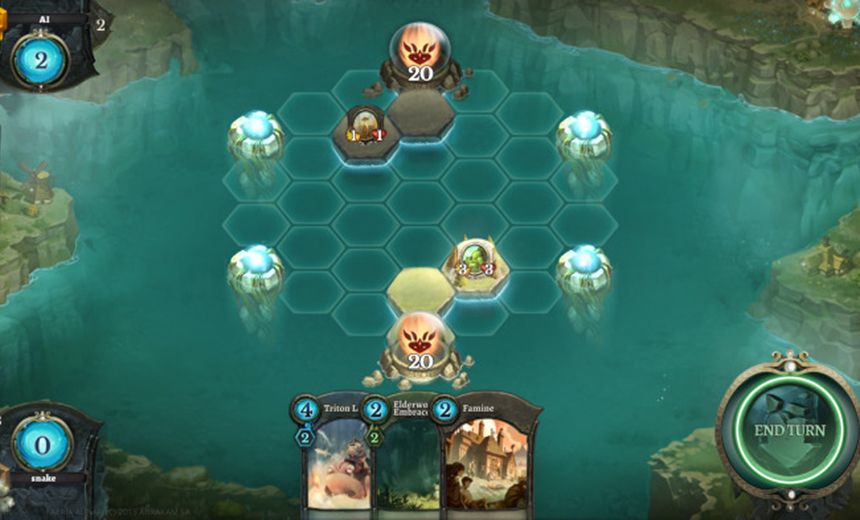New to competitive Faeria? Not a problem. PlayFaeria.com has tons of guides, tutorials, and gameplay walkthroughs that can teach you the basics of competitive Faeria and how to get the edge on your opponent.
This guide below was one of the first articles written for PlayFaeria and has been updated to reflect the current game state. It talks about the importance of reading your opponents first move and, in a tournament setting, correctly identifying the opposing decks strategy early on can mean the difference between victory and defeat.
~
The first move your opponent makes can be reliable information to help you plan your next one. Even if you don’t have a card to play, you will always have to make a choice. Most likely, it will be the choice of creating two neutral lands or 1 colored land. Because of this, a competitive player should keep in mind their opponents opening plays and reacting accordingly.
If your opponent plays two neutral lands in a straight line towards your orb, there is high chance that they are aggressively taking initiative in an attempt to rush you down. Two neutral lands in the direction of a Faeria Pool and your opponent might be “playing the long game” attempting to accumulate an overwhelming Faeria advantage.

In the above scenario, both players opted for a middle ground approach. A land in front of the orb for a basic defense and another land towards a Faeria well for potential resource gathering.
A single land of any particular color for the first couple turns? Your opponent wants to play a specific card in their deck, or they are playing with a color intensive deck that requires immediate access of multiple colors. They might be preparing to play a card of that particular lands color. All of these scenarios (and more) allow the Faeria player to read his or her opponent before they show a single card.
By this same logic, skilled players can fool opponents using their land placement. An aggressive deck can feign passivity by placing a series of unassuming lands, only to reveal their aggressive nature at a more opportune time. A defensive deck can take initiative first and place lands straight towards the enemy orb, forcing a reaction from their opponent.
Example

From left to right are the first two turns of a game of Faeria. Player A controls light colored lands, and player B controls dark colored lands.

Player A starts the game with two neutral lands in a straight line. This is the most aggressive land opening available to player A and player B should be aware of this.

Player B answers with an equally aggressive play that also serves as a defensive measure, meeting player A's lands in the middle and denying an easy path their God Orb.

Player A has an important decision now. Should I place my lands defensively or aggressively? Seemingly confident that their deck should play the role of the aggressor, Player A ignores player B's attempt at equalizing the board and continues to create neutral lands to the opponents God Orb.

Player B has had enough of this aggression and decides to take a middle of the road approach. Be placing one neutral land to further impede player A's aggressive path, and another land to continue their own modest aggression, Player B has successfully avoided being rushed down early in the game through land placement. Not a single card has been played and the two players are already locked in strategic combat.
What about colored lands?
It's important to note that, in the above example, we don't know if player B's deck requires many colored lands, but based on player A's first aggressive move, it was a wise decision to forgo colored land development in favor defending against an early onslaught. This isn't always the best choice, but it sometimes is. Based on the contents of your hand, a single colored land might do very little compared to two neutral lands that, while not helping you play your cards, denies your opponent total land control.
These nuances make competitive Faeria play a rich experience that gives player’s strategic decision making and guile a chance to shine. The better Faeria player will win more often regardless of deck selection or deck power level because of these type of decisions.

